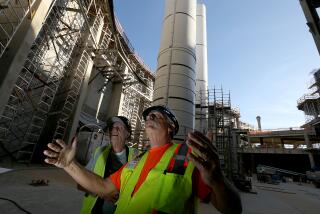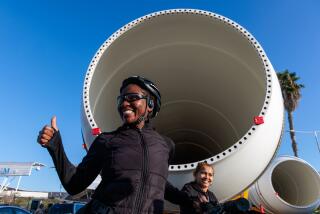SAN GABRIEL VALLEY / COVER STORY : How Caltech Launched the U.S. Rocket Revolution
- Share via
Caltech’s rocket weapons broke new ground in the field of artillery for U.S. forces.
The U.S. military had never used rockets before. U.S. forces preferred cannons, which were more accurate. Yet they wanted powerful projectiles that would have more impact and range.
The British had used artillery rockets in 1814, and the Germans and Russians had modern versions under development. U.S. forces wanted to catch up.
According to archivist Judith Goodstein’s book on the history of Caltech, “Millikan’s School,” and a spring, 1991, article in Caltech’s Engineering & Science magazine by Conway W. Snyder, who worked on the Eaton Canyon Project, the transition to rockets went like this:
At the government’s request, Caltech set out to make rockets.
The problem was finding the right form of propellant powder, or rocket fuel. Past efforts had involved a long, painstaking process that yielded grains of powder that were too small. Small grains would sharply limit the range and velocity of the rockets they propelled.
Caltech scientists came up with a process to produce larger grains, using a propellant called ballistite, which was also used in mortar shells. Ballistite looks like soft black sheets of plastic. The sheets were put into a press designed to extrude the proper-sized grains.
Other rocket research and development was performed elsewhere in the United States, but most of the technology came out of Caltech.
Meanwhile, the Germans and Russians had successfully developed their own rockets. But one U.S. military officer characterized the Holy Moses rockets-- dropped from aircraft--as the “best antitank weapon of the war.”
Today’s air-to-air guided missiles are direct descendants of the first aircraft rockets developed at Caltech.
More to Read
Inside the business of entertainment
The Wide Shot brings you news, analysis and insights on everything from streaming wars to production — and what it all means for the future.
You may occasionally receive promotional content from the Los Angeles Times.










